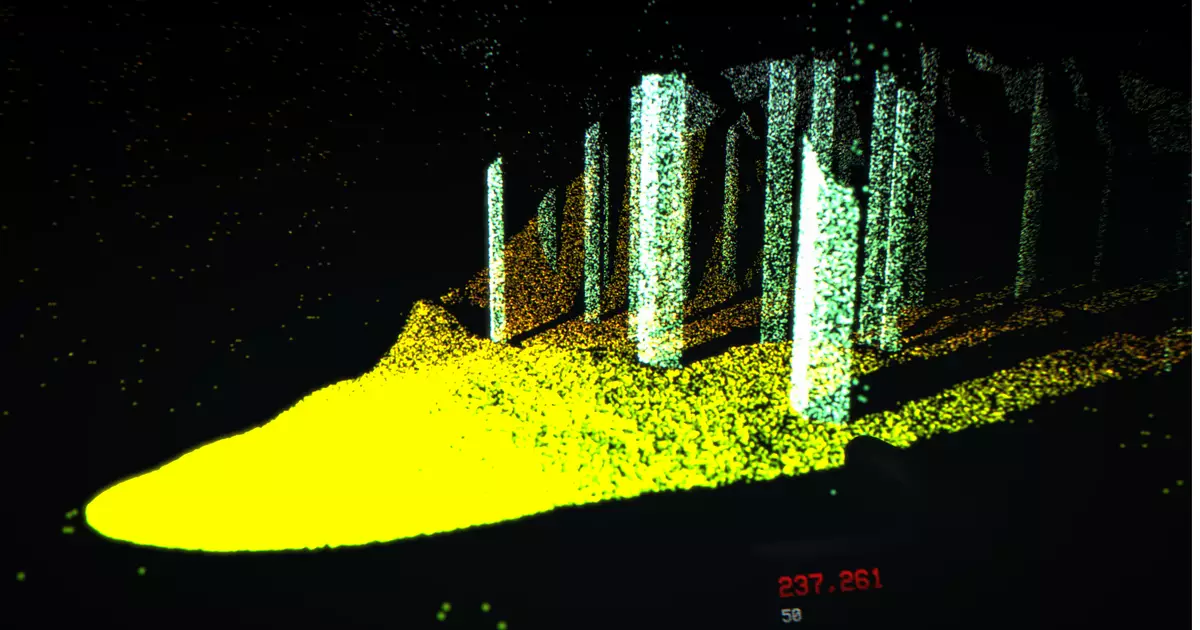Light Detection and Ranging, more popularly known as LiDAR, represents a breakthrough in how we understand and visualize our surroundings. By converting light pulses into spatial information, LiDAR paints intricate landscapes, revealing hidden layers of our world. Used in scientific communities for everything from mapping subterranean caverns to detailed assessments of natural habitats, this technology has transcended its utilitarian roots, finding newfound expression in the artistic realm. The results—captivating visuals that mix the ethereal with the tangible—are as mesmerizing as they are profound, inviting us to reconsider our relationship with the landscape.
A New Frontier in Gaming: LiDAR Exploration Program
Enter the “LiDAR Exploration Program,” a video game that redefines atmospheric horror through the lens of this remarkable technology. Developed by KenForest, the game feels akin to a blend of introspective art and tension-laden exploration. Players are equipped with a handheld LiDAR tool, tasked to traverse a meticulously designed world, reconstructing its geography while unfolding an underlying narrative that is both engaging and disquieting. The unique gameplay mechanics allow players to interact with their environment in a disarmingly tranquil manner, invoking a sense of calm that is juxtaposed with an uneasy undercurrent of dread.
A Study of Contrast: Tranquility Meets Terror
What sets LiDAR Exploration Program apart is its masterful balance between calming gameplay and subtly unnerving horror elements. Players are invited to scan their surroundings at their own pace, crafting a reality that feels simultaneously real and phantasmal. By adjusting the LiDAR’s beam width, participants penetrate the visual fabric of the landscape, drawing forth detailed images of what resides in front of them. However, this act of creation is plagued by the inherent limitation of LiDAR: the inability to expose what lies beneath or behind the surfaces, leading to unsettling revelations as players come to terms with the hollowness of the objects they conjure.
This hypnotic interplay between visibility and the unseen becomes a potent narrative device. The act of scanning feels methodical and therapeutic, yet it carries a veil of existential uncertainty. In the moments where players pull back from their meticulous focus, the world around them quivers with the promise of unseen horrors, echoing the unpredictability of exploring the unknown. The game serves as a powerful metaphor for our own understanding of reality, raising questions about how we perceive and interact with the spaces we inhabit.
The Artistic Essence of Light
As I engaged with the demo, it became evident that KenForest has embedded a rich artistic layer within the gameplay mechanics. Each level feels like a carefully curated canvas, revealing nuances of light that shift and play across the surfaces of the environment. With every callous scan, players are not just unveiling a digital landscape; they are partaking in a delicate dance with light itself. The game’s design highlights the essential characteristics of luminosity, challenging how players perceive both the world and their place in it.
In particular, the act of narrowing the LiDAR beam becomes a ritual, inviting players to delve deeper into the intricate details of the trees and foliage. A sense of intimacy emerges from this exploration; it transforms an otherwise spectral landscape into a gallery of natural wonder, teetering on the edge of grotesque awe. KenForest has tapped into a reservoir of artistic expression that few games dare to explore, and in doing so, he has crafted a fresh perspective on the interplay between reality and illusion.
An Invitation to Reflect
The journey through LiDAR Exploration Program is less about conventional gameplay and more about experiential engagement. Through its captivating use of light and shadow, the game beckons players not only to explore but to reflect upon their perceptions. Each scanning session echoes sentiments of introspection, allowing moments of self-discovery amid a haunting landscape. The tension lies quietly in the background, enriching the experience without overshadowing the sense of creative and contemplative freedom.
In essence, the game is an invitation to engage with an exploration of the human psyche, utilizing light and shadow as tools for discovery. It poses profound questions about visibility and perception, compelling us to grasp the beauty of what lies beneath—a haunting exploration of both ourselves and the world we inhabit. KenForest’s remarkable project underscores the potential of blending technology and art, leaving players with a lasting impression that extends beyond the screen.

